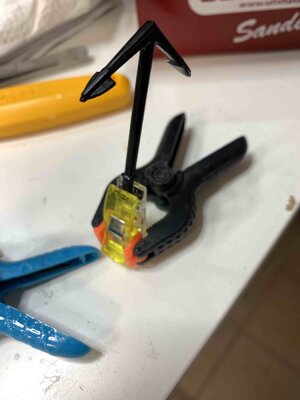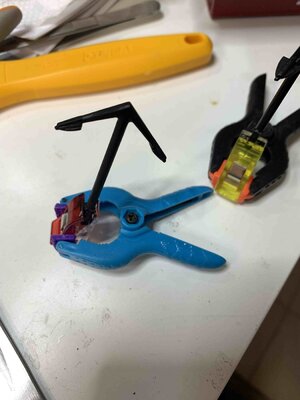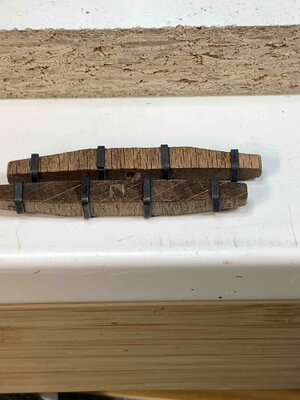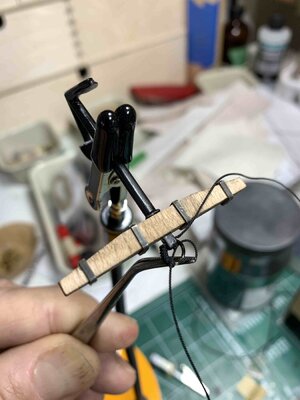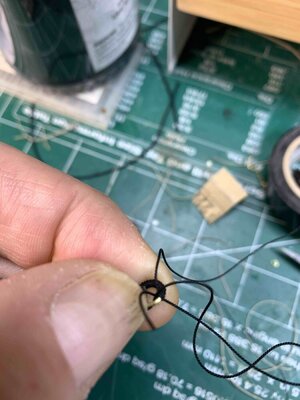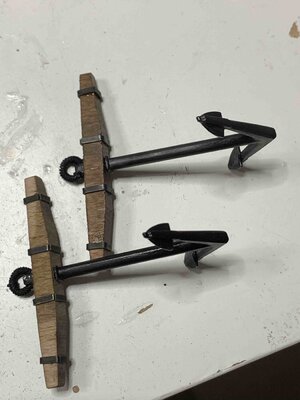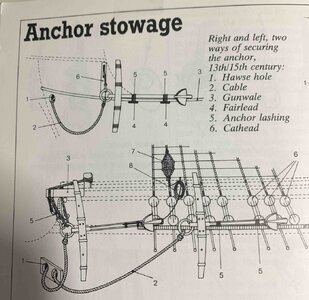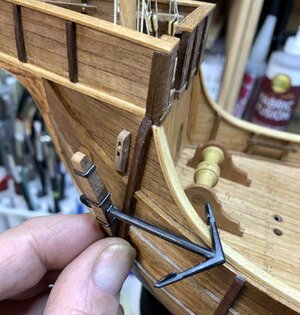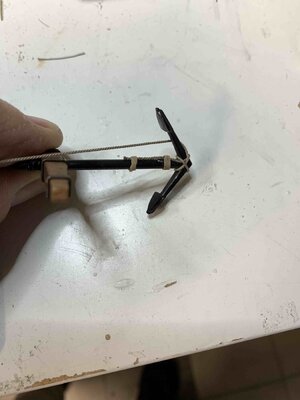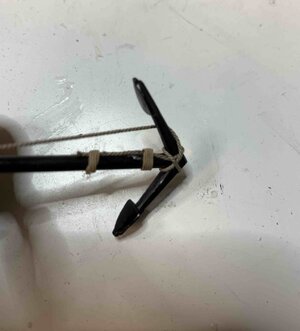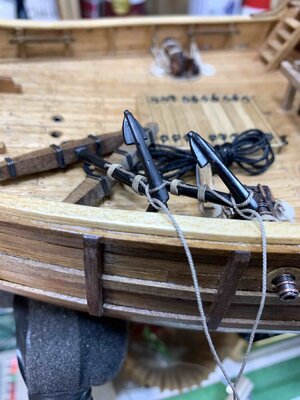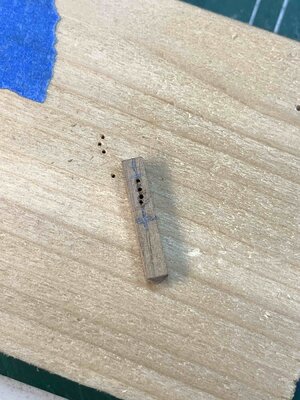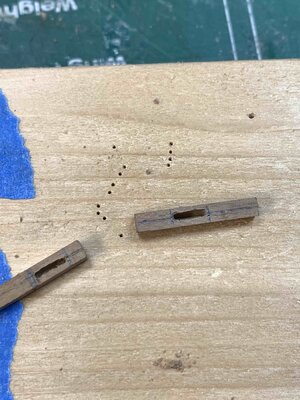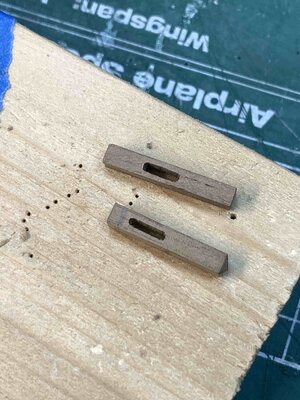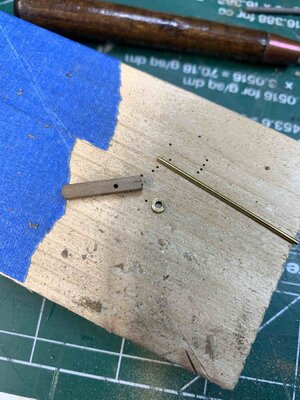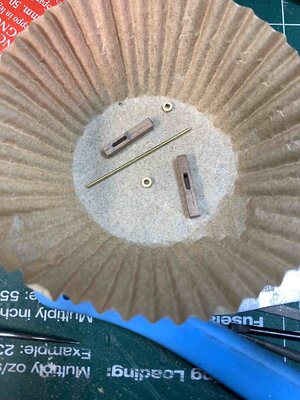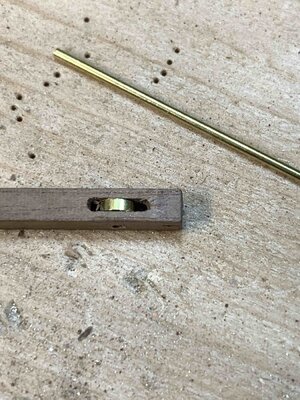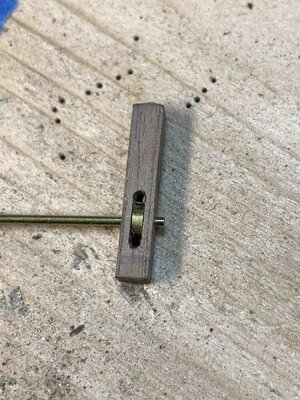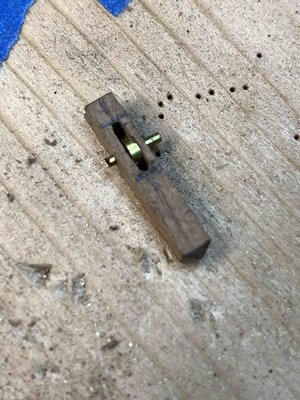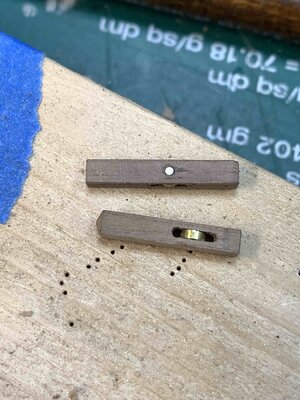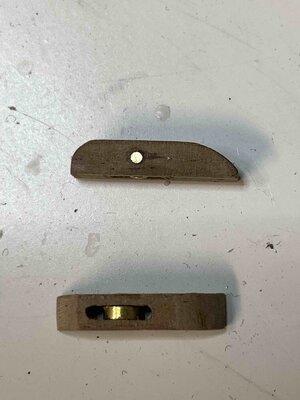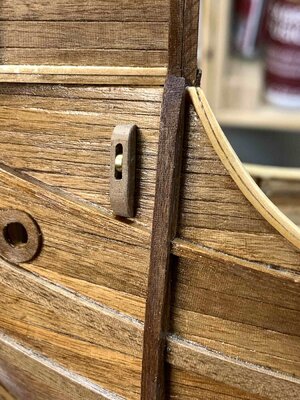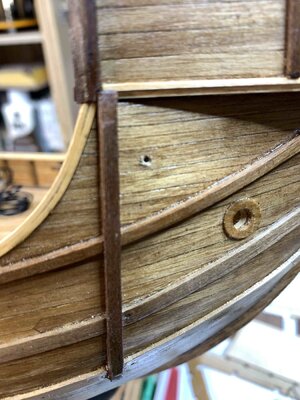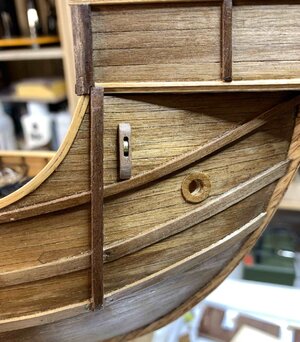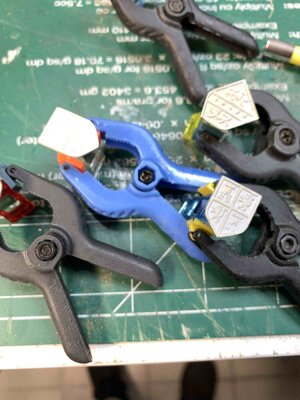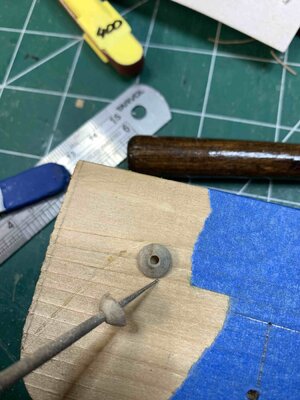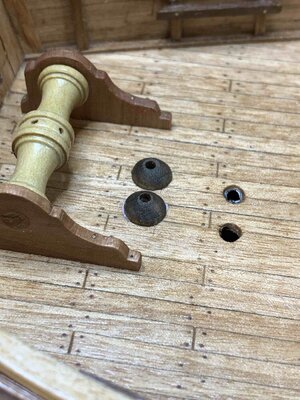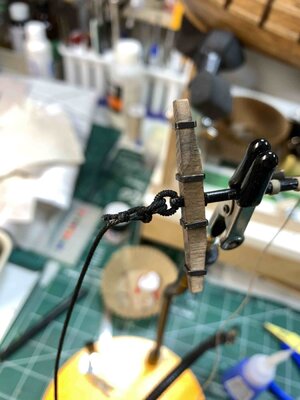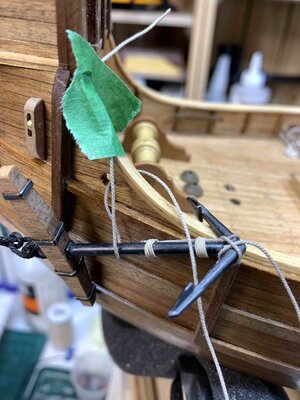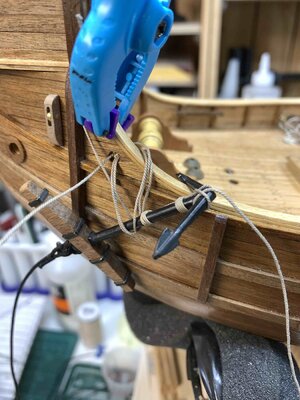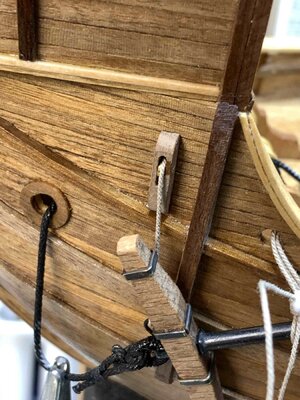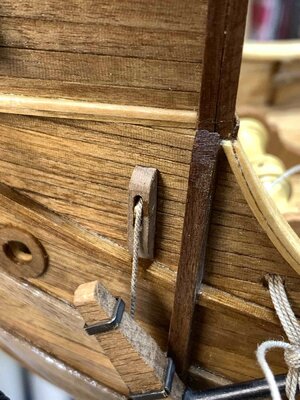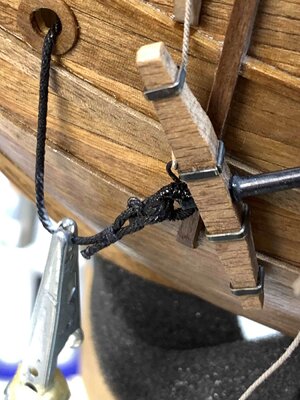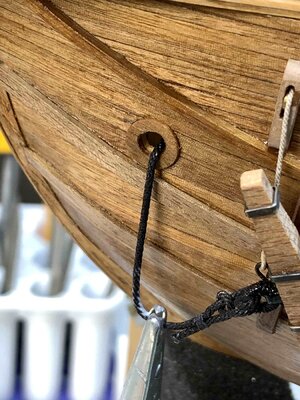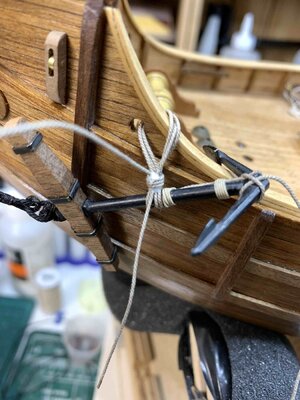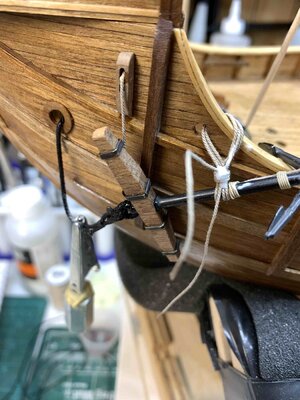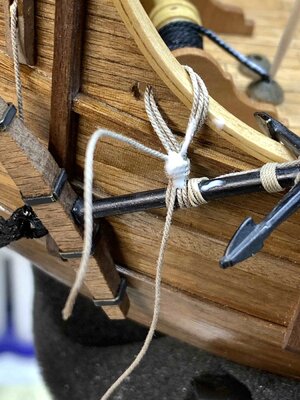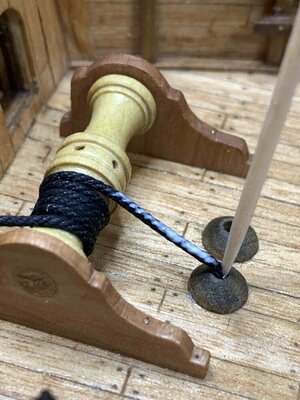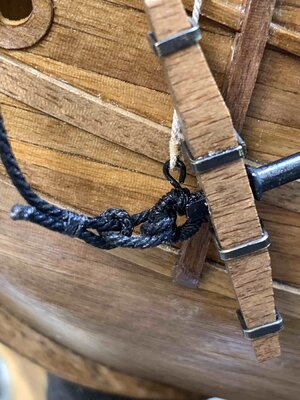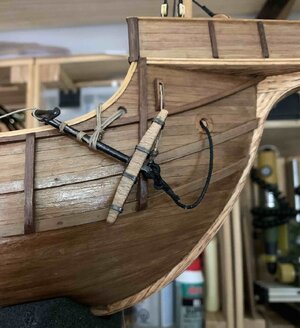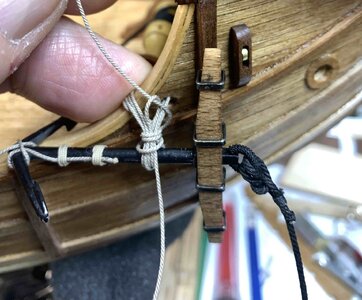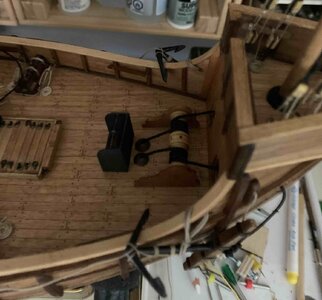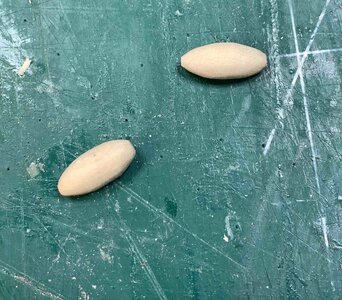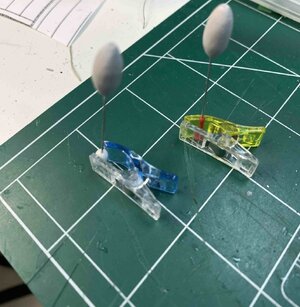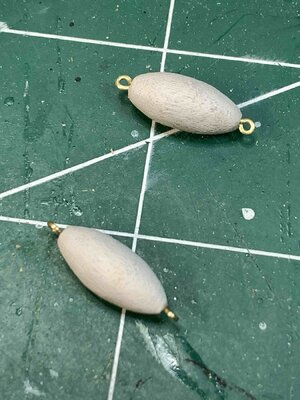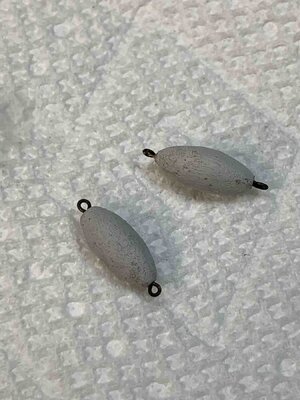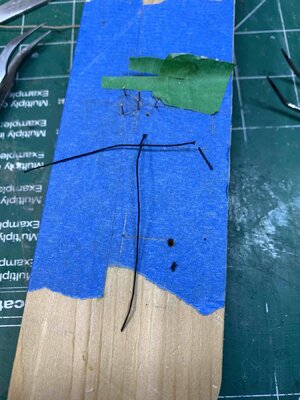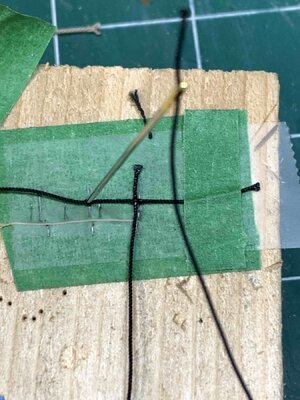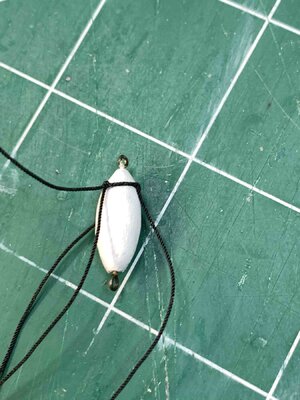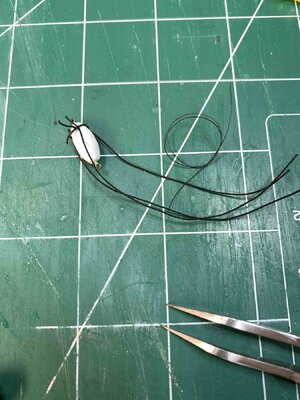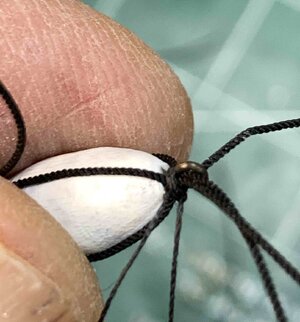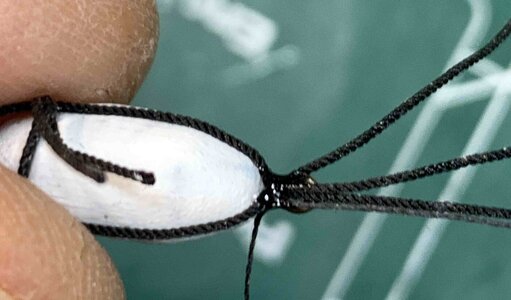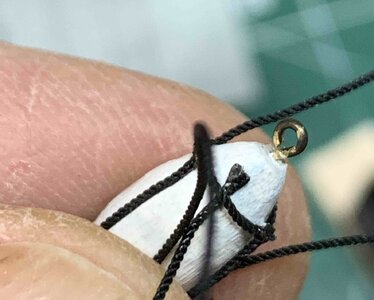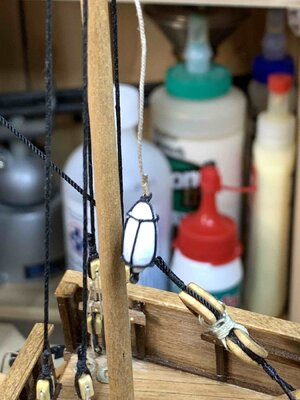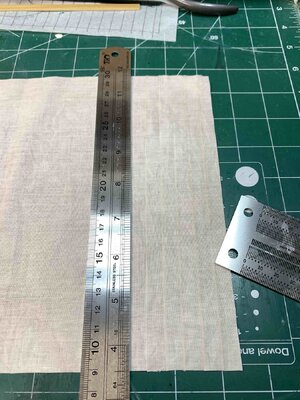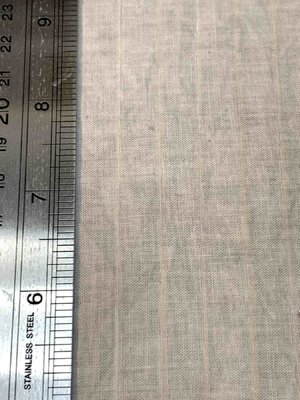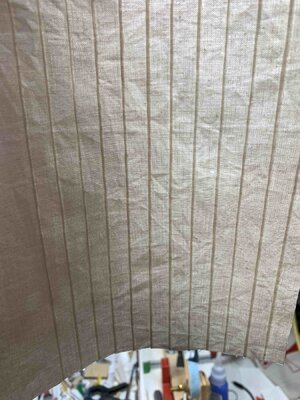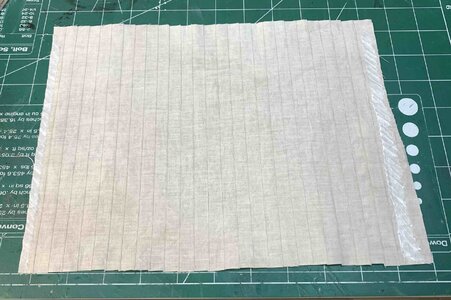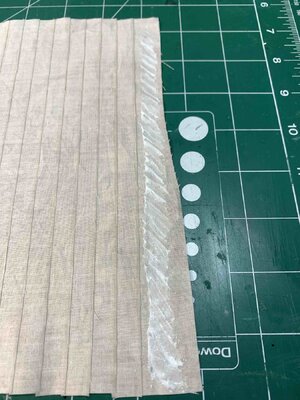This time I decided to make a sail using method I have abandoned during my Phoenix build... tiny strips cut and glued together with a 1mm overlap...
First I was looking for a decent cloth for my sails and ended up in Ikea buying few pillow cases, 152 threat count, in white. Then the cloth was dipped into water (400ml water) with Tan cloth colour liquid (5ml) made by Rit.
The cloth was in the bath for about 2 hours giving me light greyish colour which supposed to simulate a white sail after some time on the sea...
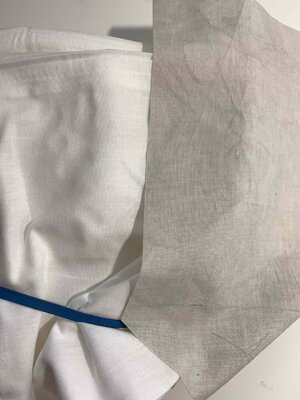
These reddish spots are not on the cloth, for some reason my phone took picture this way...
Then the process is like this:
The strip width was taken from the plan, in my case it is about 1cm. First I marked 11mm and 1mm on my ruler (stainless steel ruler works the best) and measured 10mm on the cloth. 11mm will be the distance for the next strip including 1mm for a glue.
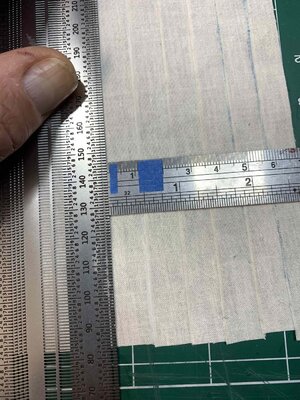
The long ruler is then hold in place to make a cut...
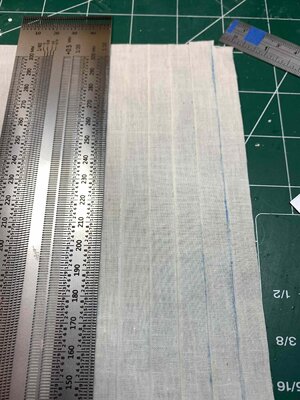
One long run with rotary cutter, using a brand new blade.
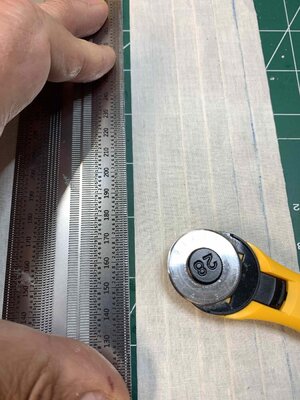
The ruler was moved 1mm to the left leaving a space where I will put a line of a white glue. The glue I used is D3 wood super glue, white, which dries out with no marks. The glue was not diluted..
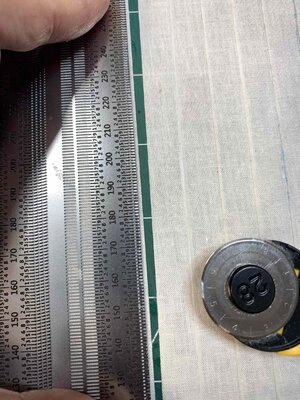
Then the cloth on the right side was moved to the ruler, over the glue and pressed lightly with finger. Then the smaller ruler was used to press the cloth with strips to the cloth without strips...
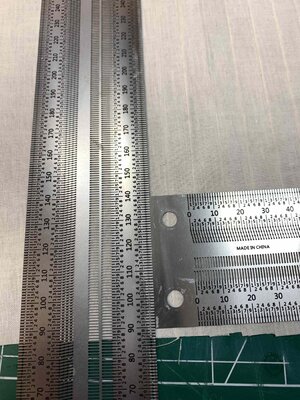
... and the process was repeated: measure, cut, move ruler 1mm, run a line of a glue, move cloth with strips to cloth without strips, press...
Every time you continue with press process, in order to remove of the cloth longer ruler easier, drag it downwards to release ruler from the cloth (some glue will go under ruler) and wipe ruler with a clean rug to remove any traces of a glue...
At the end, this is result..
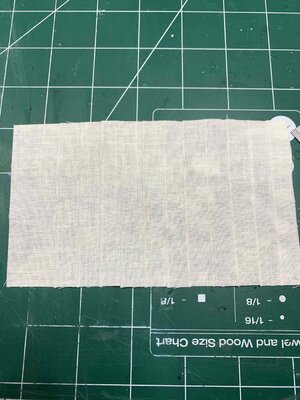
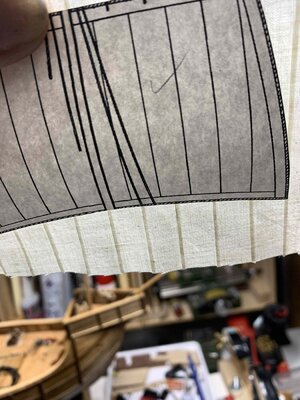
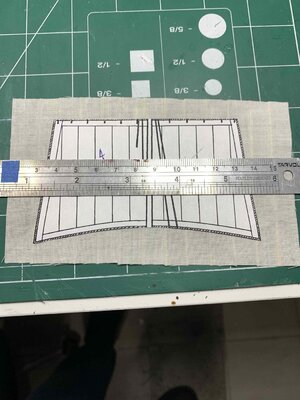
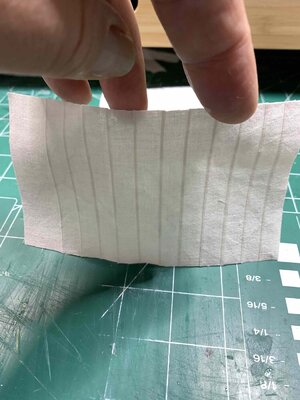
Can be quite precise with 1mm line, but I was not going wider than 1.5mm.
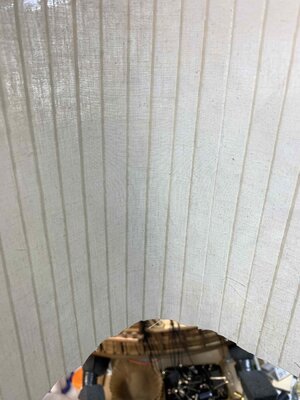
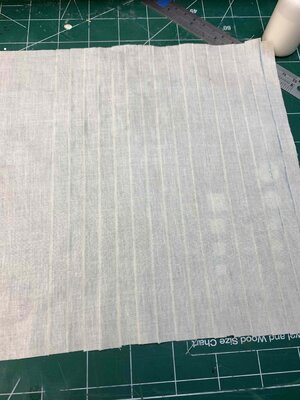
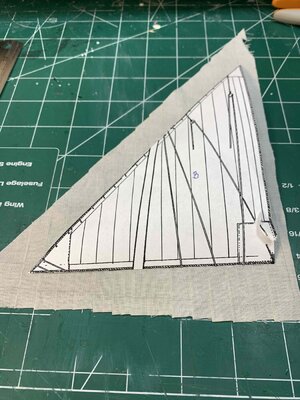
Now I will continue working on sail and hopefully will not have a need to abandon this method and just use pencil to mark the sails..
Happy modelling..
First I was looking for a decent cloth for my sails and ended up in Ikea buying few pillow cases, 152 threat count, in white. Then the cloth was dipped into water (400ml water) with Tan cloth colour liquid (5ml) made by Rit.
The cloth was in the bath for about 2 hours giving me light greyish colour which supposed to simulate a white sail after some time on the sea...

These reddish spots are not on the cloth, for some reason my phone took picture this way...
Then the process is like this:
The strip width was taken from the plan, in my case it is about 1cm. First I marked 11mm and 1mm on my ruler (stainless steel ruler works the best) and measured 10mm on the cloth. 11mm will be the distance for the next strip including 1mm for a glue.

The long ruler is then hold in place to make a cut...

One long run with rotary cutter, using a brand new blade.

The ruler was moved 1mm to the left leaving a space where I will put a line of a white glue. The glue I used is D3 wood super glue, white, which dries out with no marks. The glue was not diluted..

Then the cloth on the right side was moved to the ruler, over the glue and pressed lightly with finger. Then the smaller ruler was used to press the cloth with strips to the cloth without strips...

... and the process was repeated: measure, cut, move ruler 1mm, run a line of a glue, move cloth with strips to cloth without strips, press...
Every time you continue with press process, in order to remove of the cloth longer ruler easier, drag it downwards to release ruler from the cloth (some glue will go under ruler) and wipe ruler with a clean rug to remove any traces of a glue...
At the end, this is result..




Can be quite precise with 1mm line, but I was not going wider than 1.5mm.



Now I will continue working on sail and hopefully will not have a need to abandon this method and just use pencil to mark the sails..
Happy modelling..



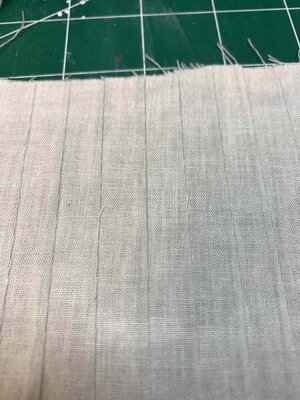
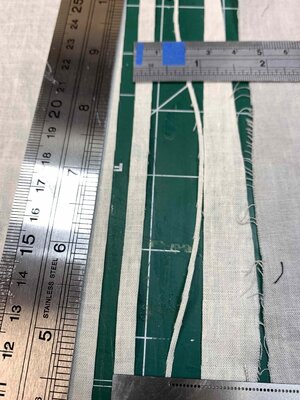
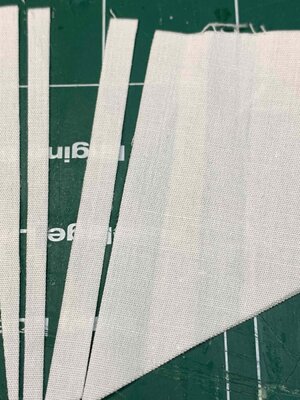
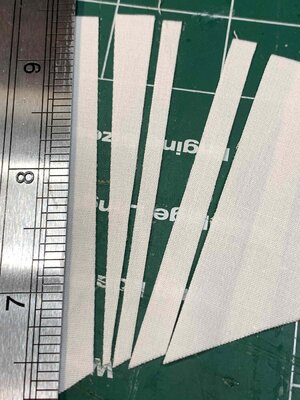
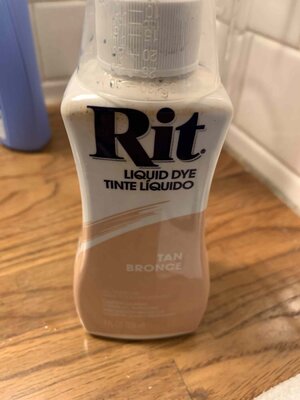
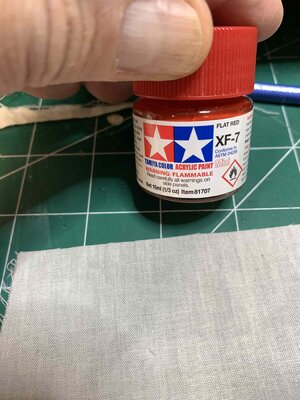
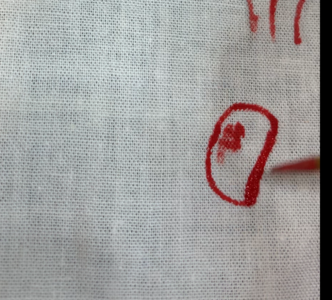
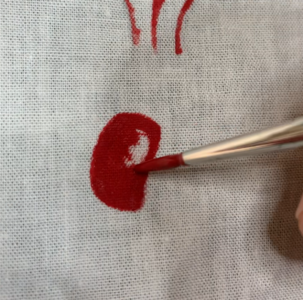
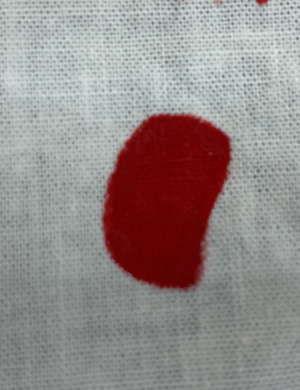
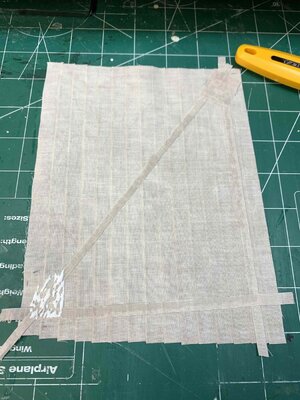
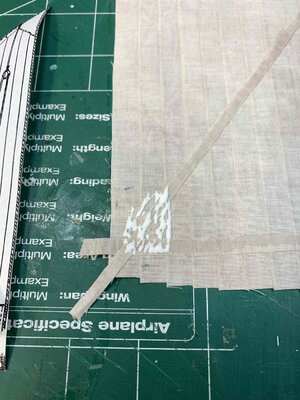
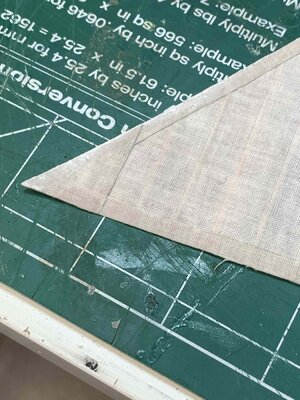
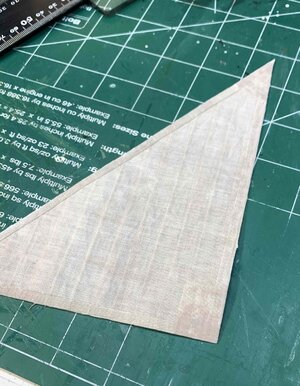
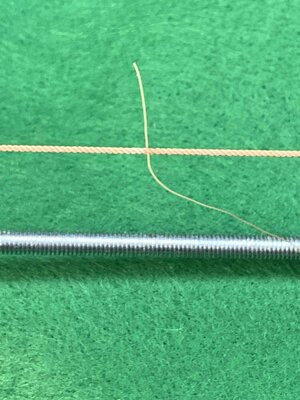
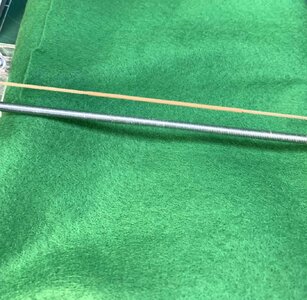
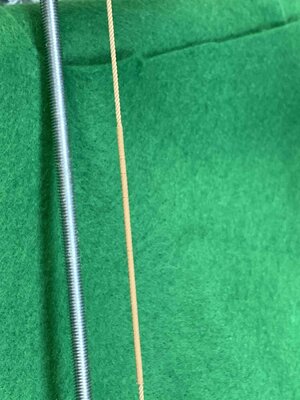
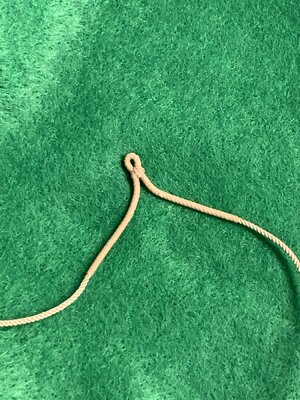
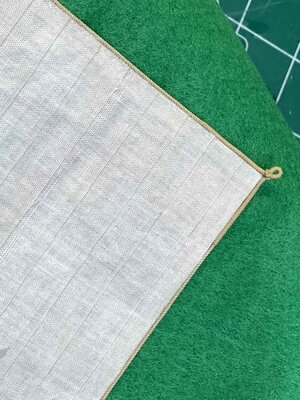
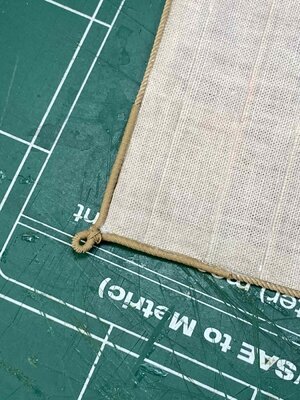
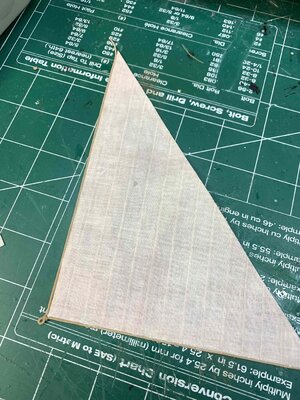
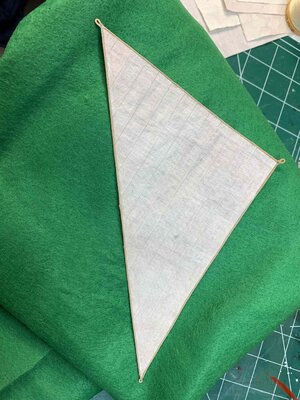
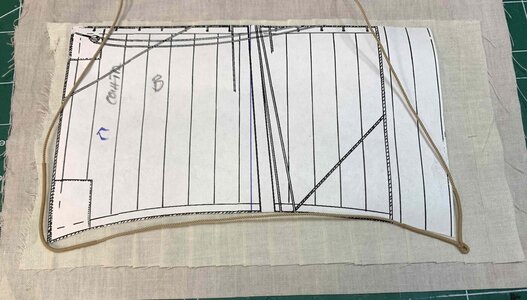


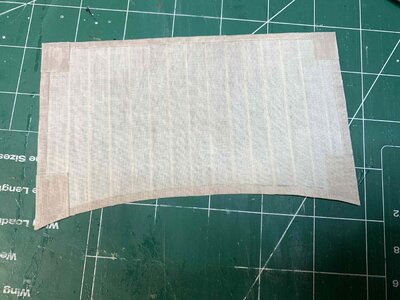
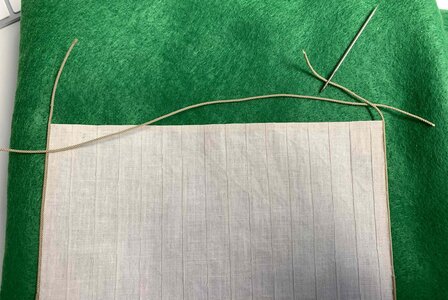
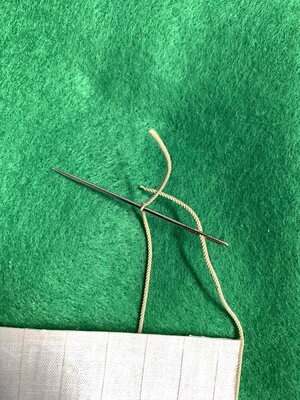
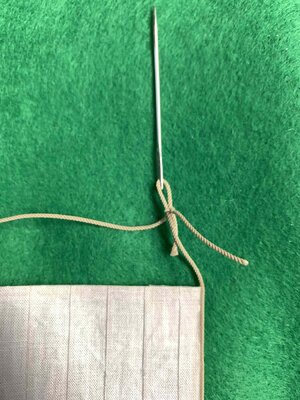
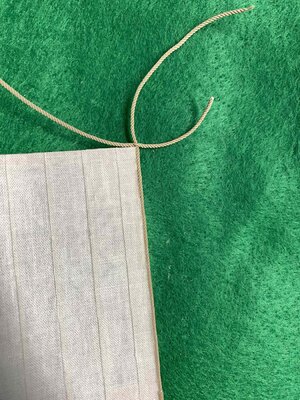
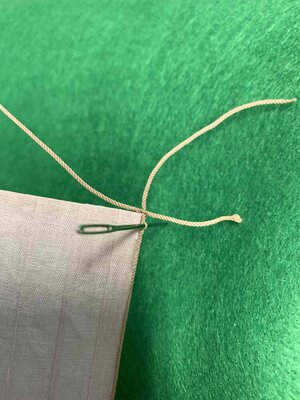
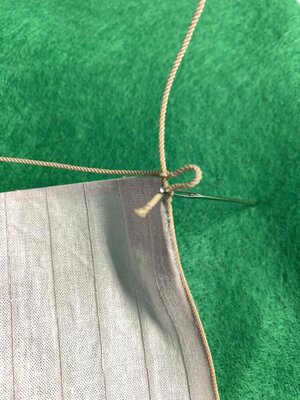
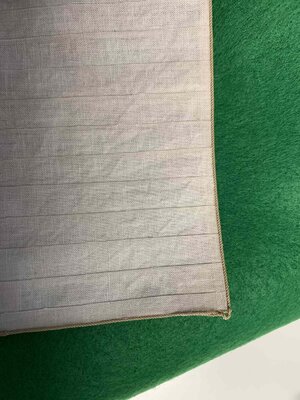
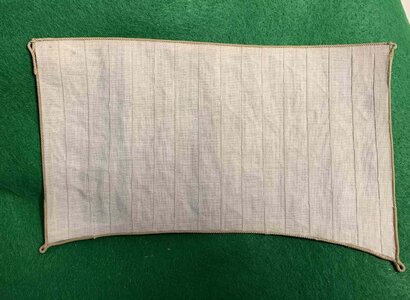
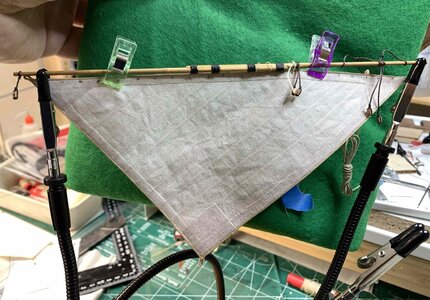
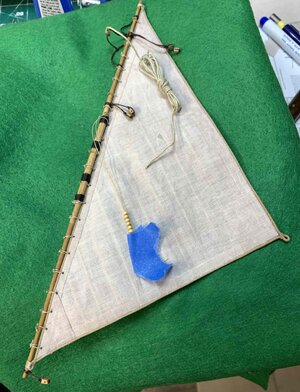
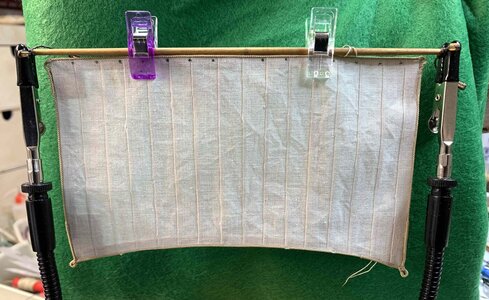
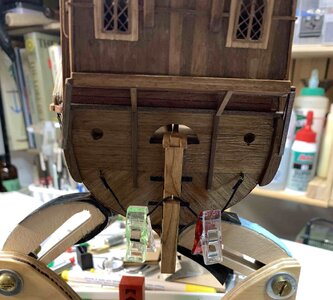
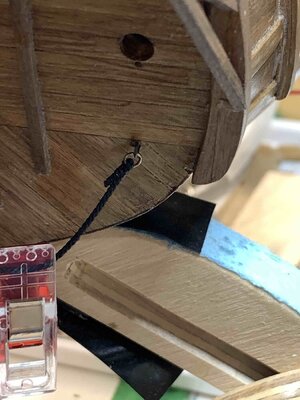
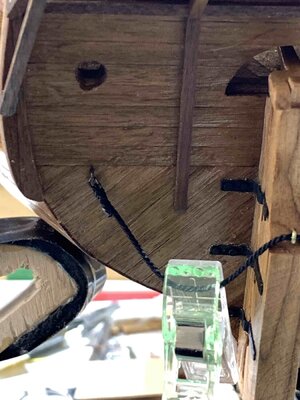
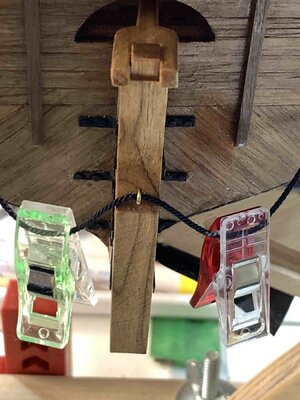
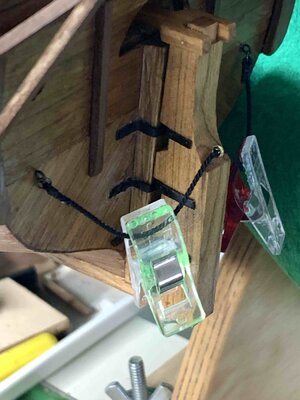
 s have been sanded and covered in flat black paint, drying and ready for a bit of weathering...
s have been sanded and covered in flat black paint, drying and ready for a bit of weathering...